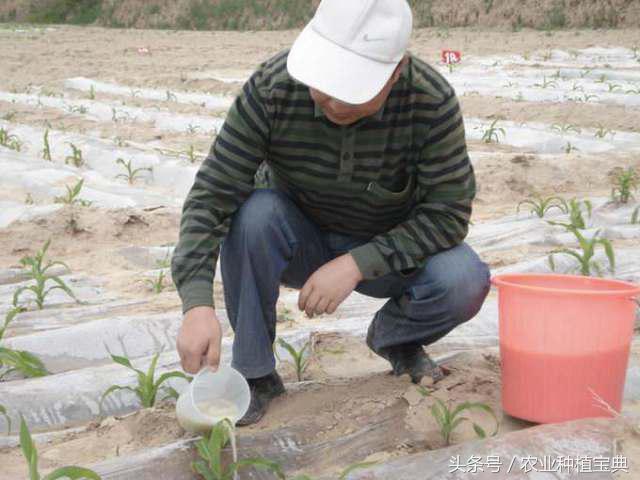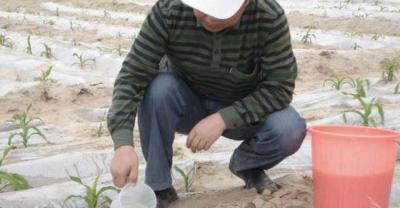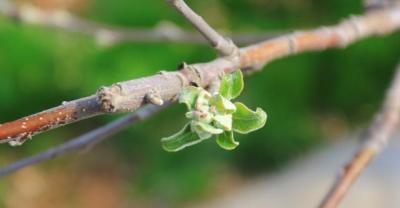Pesticides, fungicides and root irrigation do this! The proportion of the dosage should be accurate.

It is winter now, with the low temperature and high humidity in the shed, the diseases and insect pests of crops are increasing, and the root diseases of crops are one of the important ones. Chemical root irrigation is a commonly used method to control crop root diseases. If you can not master the correct methods and matters needing attention, when filling the root with pesticides or fungicides, it is easy to fail to achieve the desired results, and even produce side effects.
So, how should we carry on the root filling correctly?
First, master the correct time for root filling.
If crops want to have fewer diseases, they should prevent them in advance, and it is the same with root irrigation. Do not wait until the disease occurs, but should be irrigated when the slow seedlings are planted. Potion root irrigation is the same as watering water, there are also requirements for the weather, be sure to choose a few consecutive days of fine weather when root irrigation, and after 10:00 in the morning root irrigation is better.
Second, master the concentration of the drug.
It doesn't work if the concentration is low, but it will hurt the root if the concentration is high. Therefore, it is necessary to change the concentration according to the specific situation in order to make the best use of the medicine and achieve the effect of disease prevention. For example, the root system of vegetables at the seedling stage is small, tender, and the ability of drug resistance is small, so it is necessary to lower the concentration, otherwise it is easy to damage the young roots. In winter, because the ground temperature is low, the concentration should be slightly higher in order to achieve better results.
Third, master the size of the amount of medicine.
In the actual root irrigation operation, growers often irrigate the root according to the drug dose of half a jin per plant, whether it is small seedlings or adult plants, which is incorrect. When the seedling is young, half a jin of liquid medicine is not only wasted, but also causes root injury. In fact, two taels of irrigation is enough. For the adult plant in the full fruiting period, half a jin of medicine solution can not infiltrate into the main root system of the plant, which is obviously not enough, which can not play a good role. The capillaries in the deep soil of the fruit tree area, half a jin of medicine can not infiltrate the deep roots at all, so it can not play the role of sterilization. Compared with the main root system, the capillary root is more susceptible to bacterial infection, without the infiltration protection of the solution, it can not play the role of sterilization. Therefore, it is necessary to reasonably increase the dose of root irrigation, so that the disease prevention effect is good.
Fourth, the proportion of drug dosage should be accurate.
Be sure to follow the instructions, prepare a precise concentration to irrigate the root, and avoid estimating it, so as to avoid poor root irrigation effect or even drug damage.
Fifth, when filling roots, we should take into account the microorganisms in the soil.
This is mainly in the use of bacterial fertilizer in the shed root irrigation, to prevent root irrigation agents to destroy the biological population and ecological balance, kill the beneficial bacteria of biological fertilizer, it is best not to use fungicides to fill roots. Or after a week or two of root irrigation, fertilizers containing microbes are applied to replenish microbes. If the root disease is serious, these should not be taken into account, root sterilization must be applied, and microbial fertilizer should be applied later.
In addition, root irrigation must also pay attention to the following:
1, after using fungicide to irrigate the root, if there is a drug damage, it can be watered to remedy it. Generally, it is to slip a small amount of water quickly, dilute the concentration of the agent in the soil, and then spray some hormone drugs to slow the seedling and lift the seedling to help the plant recover quickly.
2, it is necessary to ensure that the liquid reaches the site of the disease quickly and comprehensively. For example, diseases that occur at the base of the stem, such as Phytophthora root rot and stem base rot, can be sprayed directly at the base of the stem and then irrigated with roots.
3, after root irrigation, do not immediately water within a few days, otherwise the concentration of the solution will be diluted and even the solution will be lost, which will not play a real role in sterilization and treatment.
4. Don't water the roots a few days before using fungicides. Root diseases of crops have occurred, and the pathogens will spread with the water during watering, resulting in a larger area of infection and more plant disease. Watering can also easily lead to the decrease of soil permeability, root hypoxia and root retting. The stress resistance decreased, the bacteria were more likely to be infected, the solution was more difficult to penetrate after root irrigation, and the concentration of the solution was also reduced.
Through the above introduction, I hope it can help you to make better use of the liquid root irrigation to achieve the effect of disease prevention and treatment, and promote the healthy growth of crops.
Agricultural information
- Prev

How to wash off the pesticide residues on fruits and vegetables? Teach you a few tricks. It's healthy to eat this way.
Now, 99% of agricultural products have used pesticides in varying degrees in the production process. Due to the short growth period and the occurrence of many insect pests, most melons, fruits and vegetables are over-applied.
- Next

Some common pesticides have nothing to look at, it is best to remember, so as not to use improperly, affecting the harvest
Fungicide [stone sulfur mixture] peach, plum, plum, pear, grape, beans, potatoes, tomatoes, onions, ginger, melon, cucumber and so on. [Bordeaux mixture] potato, fan...
Related
- Fuxing push coffee new agricultural production and marketing class: lack of small-scale processing plants
- Jujube rice field leisure farm deep ploughing Yilan for five years to create a space for organic food and play
- Nongyu Farm-A trial of organic papaya for brave women with advanced technology
- Four points for attention in the prevention and control of diseases and insect pests of edible fungi
- How to add nutrient solution to Edible Fungi
- Is there any good way to control edible fungus mites?
- Open Inoculation Technology of Edible Fungi
- Is there any clever way to use fertilizer for edible fungus in winter?
- What agents are used to kill the pathogens of edible fungi in the mushroom shed?
- Rapid drying of Edible Fungi

